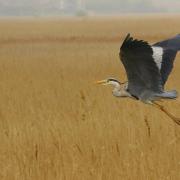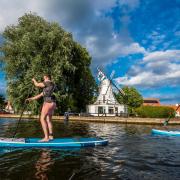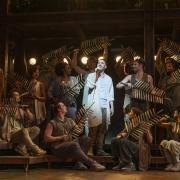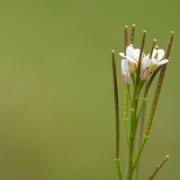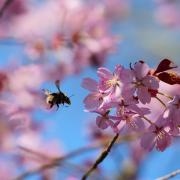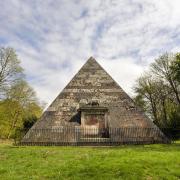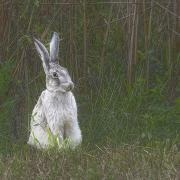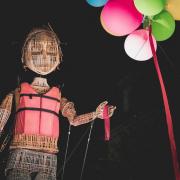Encourage children to embrace the wonder of nature, this and every month, urges the Norfolk Wildlife Trust’s wonderful writer Nick Acheson.
The colour of July is gold. Gold now are the barley fields which cover much of Norfolk. Gold in them the sheltered eyes of hares, the clambering harvest mice, the gapes of skylark chicks against the dirt. Gold the corn marigold blooms at the field’s edge, where spared the spray, gold on them the backs of probing hoverflies.
Gold too are the grasses in uncut meadows and verges. Not yet the sad dun of wind-torn winter but gold already with autumn, their breeding, seeding done, as the balance of the year tips - so soon? - towards shorter nights and colder. Gold in the happy ragwort flowers here, gold in the fleabane where the water sits, gold in the burnished eyes of grasshoppers singing for summer never to cease.
By our coast there is gold in the bills of little terns, fidgeting like finger puppets over the beach, bringing silvered sand-eels to their sand-hunkered chicks. Nearby on a scrape stand yellow-legged gulls, loafing here on a summer break from the continent, their legs eponymous. Gold, among the stubbornly green reed in the fen, the flowers of yellow loosestrife and greater bird’s-foot trefoil. Gold the long-horn beetle’s wing-shields on them, blotched and spotted with black. Strangalia maculata, the evocative name of this bejewelled brooch of a bug.
There is gold in people’s faces too, as they enjoy the smells, the sounds, the sights of summer, small and big. The sun has turned their arms and the backs of their necks gold, and the legs of shorts-clad children splodging through a saltmarsh past the rayless gold flowers of sea aster.
It is here that the true treasure lies, the crock of gold: In the relationship the holidays allow our children to build with nature, the horizon-stretching freedom of the summer. Now can children build dams in streams; can make shelters in the woods; can crawl through bracken on their tummies; can crush and smell wild garlic or sea wormwood leaves, hurting their noses with the tang. Now are they free.
Childhood today is a diminished thing: A boxed-in, x-boxed, fear-foxed shadow of what it was even 25 years ago. This dislocation from nature is bad for nature. For who will protect it in the future, and the landscapes in which it flourishes, if not the children and grandchildren of today? Who will be the Norfolk Wildlife Trust and Royal Society for the Protection of Birds and British Trust for Ornithology staff, volunteers and members of tomorrow if not them?
But the dislocation is worse still for children. For humans as a species. This spring’s fox cubs, now tentatively exploring the land as adolescents, grew up, played, and learned in a landscape charged with meanings. What to fear? What to chew? Where to hide? When to flee and when to chase? So too the young of every sentient species grow in an environment of many meanings. Meanings in smell, sound, sight and every sense. Meanings between life and death.
Except ours. Many of our young now grow indoors, starved of their landscape’s meaning. Yet we too are children of the wild. As the fox, we became what we are - as a species - in a landscape heavy with meaning. We walked, ran, hunted, foraged, planted, grazed, migrated, grew, in a landscape which meant to us life or death, depending to some extent on luck but greatly too on our having learned it. Played in it as cubs.
Children today are diminished if their world, their friendships, their leisure and their exploration are solely digital. Outside there is a 3D world stranger and more wondrous than the bravest fantasy, more interactive than the smartest app, more challenging than the toughest online game. And it is theirs. Their birthright by being human. By being another of nature’s animals. And it is where our children belong, summer’s gold sun turning gold the backs of their necks.
The colour of July is gold. And childhood’s too.
For information on Norfolk Wildlife Trust’s summer activities aimed at engaging children and families with nature, visit www.norfolkwildlifetrust.org.uk/families




